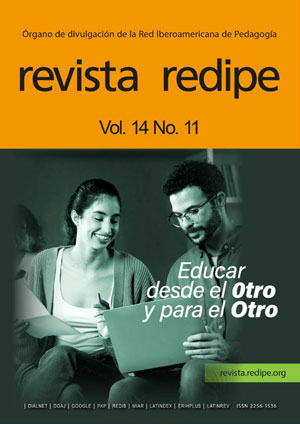From school dropout to school dropout to broaden contextual understanding: A reading from the theory of social fields
Main Article Content
Keywords
Early school leaving, School dropout, Capitals, Habitus, School trajectories
Abstract
The article aims to broaden the understanding of the phenomenon of “early school leaving” instead of using the term “school dropout”, drawing on Pierre Bourdieu’s theory of social fields. It argues that school abandonment is the result of multiple structural factors, including economic, social, and educational inequalities, particularly in rural areas.
In this context, the case of the department of Tolima (Colombia) is analyzed, where the school dropout rate has shown a concerning increase: from 5.2% in 2019 to 6.8% in 2022, surpassing the national average. In 2024, the dropout rate in secondary education was 1.3 percentage points higher than the national average, highlighting a deeper structural issue.
The structure of the educational system favors the retention of students with greater economic, cultural, and social capital, while those in vulnerable conditions face barriers to access and continuity.
The study shows that rural schools have fewer resources, less trained teachers, and conditions that hinder learning. Furthermore, the urban educational system imposes demands that do not always align with rural realities. It concludes that the term “school abandonment” is more accurate, and that adaptive policies are needed to reduce educational exclusion and promote the continued enrollment of young people in the school system.
References
Blanco Ariza, Y. y Carruyo Durán, N. (2022). La deserción escolar en educación rural. Revista Conocimiento, Investigación y Educación. CIE, 2(15), 14-27. https://doi. org/10.24054/cie.v2i15.1502
Bourdieu, P. (2011). Capital cultural, escuela y espacio social (I. Jiménez, trad.; 2.ª ed.). Siglo XXI.
Bourdieu, P. (2020a). Curso de Sociología General 1: Conceptos fundamentales. Cursos del Collège de France, 1981-1983 (vol. 1). Siglo XXI.
Bourdieu, P. (2020b). Curso de Sociología General 2: El concepto de capital. Cursos del Collège de France 1981-1983 (A. B. Gutiérrez, ed.; vol. 2). Siglo XXI.
Bradley, C. L. y Renzulli, L. A. (2011). The complexity of non-completion: being pushed or pulled to drop out of high school. Social Forces, 90(2), 521-545. https://doi. org/10.1093/sf/sor003
Cabrera Cifuentes, K. A. (2020). Estado, escuela y violencia simbólica: construcciones desde Pierre Bourdieu. Miradas, 15(1), 107-128. https://doi.org/10.22517/25393812.24472
Cajigal-Molina, E., Estela Yon-Guzmán, S., Hernández-Marín, G. del J. y Arias-Gómez, L. (2023). Capital cultural: su relación con la trayectoria escolar en estudiantes de la UNACAR. Eduscientia. Divulgación de la Ciencia Educativa, 6(11), 25-46. https:// eduscientia.com/index.php/journal/article/ view/224
Cavalcanti, M. (2022). Evidence based decision, data science and school dropout: a complexity approach. Revista Inteligencia Empresarial, 45, 1-13. https://doi. org/10.36559/v4512022
Cerón-Martínez, A. U. (2019). Habitus, campo y capital: lecciones teóricas y metodológicas de un sociólogo bearnés. Cinta de Moebio, (66), 310-320. https://doi.org/10.4067/ S0717-554X2019000300310
Chamorro, L. E. (2022, 7 de octubre). Zonas urbanas vs zonas rurales: ¿En dónde vive la mayoría de los tolimenses? El Nuevo Día. https://www.elnuevodia.com.co/otros/ educacion/485754-zonas-urbanas-vszonas-rurale
Cicalese, G. G. (2021). La teoría de los campos sociales de Pierre Bourdieu en 7 clases: del campo social al campo científico. Universidad Nacional de Mar del Plata.
Cifuentes-Garzón, J. E. (2021). Escuela urbana y reconfiguración de identidades en la juventud rural. Revista Colombiana de Educación, (82), 131-150.
Colbert, V. (1999). Mejorando el acceso y la calidad de la educación para el sector rural pobre: el caso de la Escuela Nueva en Colombia. Revista Iberoamericana de Educación, 20, 107-135.
Comisión Económica para América Latina y el Caribe. (2020). Panorama social de América Latina 2020. Cepal. https:// www.cepal.org/es/publicaciones/46687- panorama-social-america-latina-2020
Centro Nacional de Memoria Histórica. (2013). ¡Basta ya! Colombia: memorias de guerra y dignidad. Resumen. Centro Nacional de Memoria Histórica. https:// www.centrodememoriahistorica.gov. co/descargas/informes2013/bastaYa/ resumen-ejecutivo-basta-ya.pdf
Delgado Hoyos, J. F., Macías Samboni, N. y García Valencia, A. D. (2023). Abandono de los estudiantes provenientes de las Escuelas Primaria Multigrado, en la I.E. Bordones Isnos, Huila. Revista Paca, (15), 93-114. https://doi.org/10.25054/2027257x.3948
Doe, D., Shindano, S. O. y Kimolo, A. A. (2022). “Why are they out?” Exploring school heads and teachers’ views on secondary school students’ dropout in peri-urban communities of Zanzibar, Tanzania. Open Journal of Social Sciences, 10(10), 252-272. https://doi.org/10.4236/ jss.2022.1010017
Dupéré, V., Goulet, M., Archambault, I., Dion, E., Leventhal, T. y Crosnoe, R. (2019). Circumstances preceding dropout among rural high school students: a comparison with urban peers. Journal of Research in Rural Education, 35(3), 1-20. https://doi. org/10.26209/jrre3503



